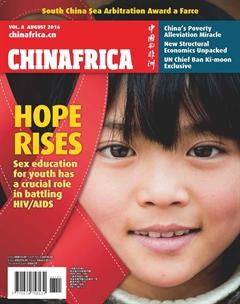A Human Rights Issue
While the world continues to search for an HIV vaccine and cure, AIDS remains one of the major global health challenges. And the challenge is no greater than in Sub-Saharan Africa, which according to the World Health Organization (WHO) is the worlds most affected region, home to 25.6 million people living with HIV in 2015. The region also accounts for 66 percent of the global total of new HIV infections.
These figures provided much food for thought at the 21st International AIDS Conference (AIDS 2016) that took place in Durban, South Africa in July. The city was hosting the biennial AIDS conference organized by the International AIDS Society, the worlds leading independent association of HIV professionals, for the second time.
UNAIDS says South Africa now has the biggest HIV program in the world. It needs it, as the country has the most people living with HIV worldwide - 6.5 million people. In cooperation with the UNAIDS Fast-Track approach to ending the AIDS epidemic by 2030 around the world, South Africa is pushing ahead aggressively with its treatment and prevention campaigns with promising results. In 2014, 340,000 people were infected with HIV, down from 600,000 in 2000.
South Africas Deputy President Cyril Ramaphosa says the country has invested heavily in its AIDS response in the last six years and he was excited to have the opportunity to show these encouraging results at both the high-level UN meeting on ending AIDS in New York in June and AIDS 2016.
One of the more effective measures now used to prevent HIV in Sub-Saharan Africa is voluntary medical male circumcision. According to the WHO, more than 10 million men and adolescent boys had been circumcised by the end of last year, a milestone they believe shows how communities, countries and global health agencies can cooperate. The WHO says medical trials revealed circumcision lowered the risk of being infected with HIV by about 60 percent. Last year UNAIDS called for 27 million new medical male circumcisions over the next five years as a core component of the Fast-Track approach of reducing new HIV infections in the region to fewer than 500,000 by 2020.
The WHO says expanding antiretroviral treatment to all people living with HIV and increasing prevention choices can help avert 21 million AIDS-related deaths and 28 million new infections globally by 2030. While there is no silver bullet to stamp out the virus, prevention is always better than cure, and sex education, particularly for adolescents, has to be a priority. At their 16th General Assembly in Addis Ababa in January, the Organization of African First Ladies Against HIV/AIDS reported that AIDS-related deaths in Africa had declined in all age groups except among adolescents (aged 10-19).
Social stigma and discrimination around sexual activities, sexual orientation and drug use coupled with religious, political and cultural sensitivities, present major hurdles for sex education and need to be continually addressed with increased levels of tolerance. Nelson Mandela summed it up best when he famously said, “AIDS is no longer just a disease, it is a human rights issue.”
HIV/AIDS prevention programs cannot be effectively rolled out while criminalization of and discrimination against those affected exists. The approach to HIV/AIDS requires a permanent transformation from crisis management to a more sustained, targeted, humanistic response if it is to have any form of sustained success.

